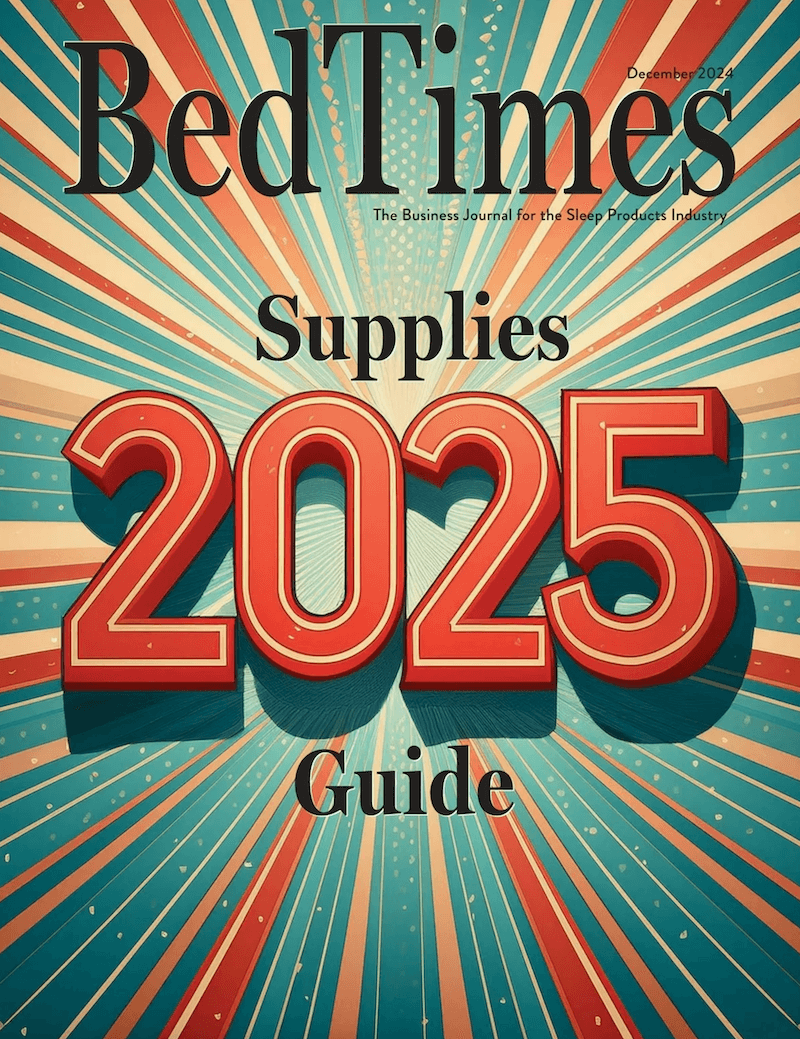BY GARY JAMES
Revamped lines, new execs and an emphasis on licensee input set stage for this year’s growth
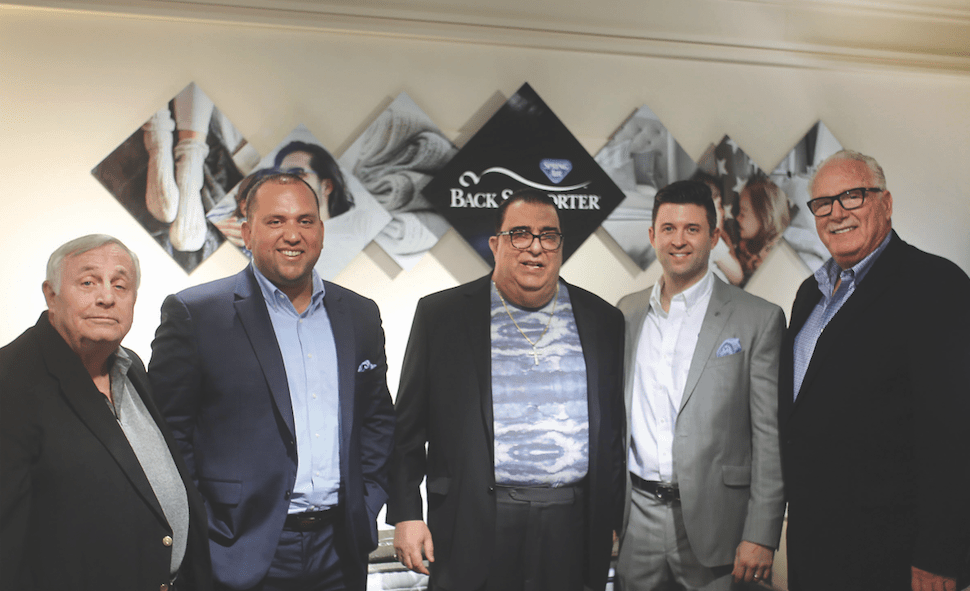
In January 2017, when he assumed his new role as president of Spring Air International, Nick Bates placed one priority at the top of his to-do list.
The priority? Strengthening Spring Air’s relationships with its eight U.S. licensees so every manufacturer works together as a single, strong team moving the brand forward. With a little over a full year under his belt as leader, Bates says the company has made big strides in reaching that goal.
“Our most significant accomplishment during 2017 was uniting our licensees,” says Bates, who at 30 years old is one of the bedding industry’s youngest presidents. “Getting a group of independent-minded businesspeople to work together is always a challenge with any licensing structure. But with our new approach, we’re in a position to work much more collaboratively.”
To create a culture centered on closer cooperation, Bates organized three working committees, one each assigned to product development, the Las Vegas Market and brand strategy. Each committee contains a mix of licensees and Spring Air executives, and every licensee is involved in at least one committee. The committees started holding their first meetings toward the end of 2017 and, this year, they plan to meet two or three times a month via video conferencing.
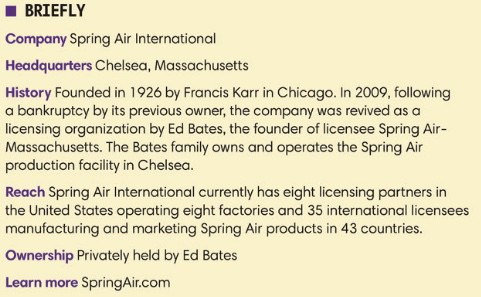 In addition, face-to-face meetings will be held once a quarter at various locations, such as the Spring Air International corporate office in Chelsea, Massachusetts, or during industry events. At the ISPA EXPO 2018 March 14-16 in Charlotte, North Carolina, Spring Air’s Product Development Committee, which consists of Bates and five licensees, will be visiting vendor booths as a group.
In addition, face-to-face meetings will be held once a quarter at various locations, such as the Spring Air International corporate office in Chelsea, Massachusetts, or during industry events. At the ISPA EXPO 2018 March 14-16 in Charlotte, North Carolina, Spring Air’s Product Development Committee, which consists of Bates and five licensees, will be visiting vendor booths as a group.
“We’ll be meeting with vendors as Spring Air, not as individual licensees, such as Spring Air Southern California or Spring Air Midwest,” Bates says. “We’re going to meet with vendors and see their new products as a group, review our opportunities as a group and decide on what we’re going to use and not use as a group.”
In the past, Bates says, each licensee might have had its own preferred vendors for fabric and other materials. There wasn’t uniformity across the line and, as a result, licensees were unable to take advantage of some of the price breaks and other synergies that occur when components are bought in higher volumes.
Under the new approach, obtaining economies of scale will be easier, and the company’s product line will be more consistent from licensee to licensee. “We’ll be more meaningful to our vendors—and also to our customers,” Bates says.
A shared mission
With its new committees, Spring Air has created a structure in which licensees work together to set direction, review options and make decisions. In the case of fabrics, for example, “after reviewing what’s available from vendors, the committee will determine which styles will work best for our line and those will be the ones all the licensees will use,” Bates says.
Because the licensees have a direct relationship with retailers and their consumers and “are in the trenches every day, fighting the battles for floor space and sales,” they have a unique perspective on what the market needs and where demand is heading, Bates says. “That’s why we’ve elected to involve them in major decisions relating to product development, our market presence and strategies for building the brand,” he says. “We want to take full advantage of the deep pool of expertise that we have in our talented group of licensees.”
The new committee structure already is providing Spring Air with ideas and insights. “Our licensees have embraced this new approach much quicker than I thought they would,” Bates says. “They are engaged and motivated. And everyone seems to feel quite comfortable with the process of arguing their points so all sides of an issue are heard and then coming to an agreement about what they feel is right.”
Spring Air’s Las Vegas showroom provides a good example of how such debate and consensus building can lead to action and improvement, Bates adds. For this year’s winter market, the company made a number of changes suggested by the new Las Vegas Market Committee. Those included an update of the showroom’s layout to make it more open and easier to shop and the installation of new lighting and a front desk in the reception area at the front of the space. New shirts were purchased for everyone working in the Spring Air space to create a better sense of team identity.
“The feedback we got from our market committee was that our showroom wasn’t inviting enough in the front and, once you were in the space, it was hard to find the products you were most interested in,” Bates says. “The changes we decided to make were a direct result of this feedback.”
Going forward, Bates expects the topics for discussion at committee meetings will be a mix of items “that corporate would like to address, as well as things that the licensees want to improve or work on.”
One other benefit of the increased interaction, he adds, is the deeper relationships that are being forged across the company. “It’s made us tighter, both professionally and on a personal level, as well,” he says.
Global views
For its international licensees, Spring Air’s annual global summit provides a similar opportunity for sharing ideas and strategizing. Spring Air currently has 35 licensing partners manufacturing and marketing the Spring Air brand in 43 countries.
The company opted not to include the global licensees in its U.S. committee structure, Bates says, because of the many differences that exist in the way business is done from country to country. “The international licensees have their own unique business structures, laws and product lines,” Bates says. “They have more in common with each other than they do with their U.S. counterparts.”
Spring Air’s eighth annual Global Summit Conference was held in November 2017 in Taipei, Taiwan. Representatives from 25 countries took part in the conference, where they received a report on the brand’s successes last year and growth plans for this year. The conference also provided attendees with an opportunity to share best practices and brainstorm new initiatives.
“This is a very important annual meeting for us because it not only allows for critical thought leadership and best-practice exchange, it enables us to present our new programs and share our success,” Bates says. “For most of our international licensees, Spring Air is their leading brand. The cachet of carrying our well-regarded American brand is a key factor in the success of their business, so knowing our plans and product is intrinsic to their success.”
Eric Spitzer, chief operating officer of Spring Air International, adds: “Our time together is critical to the success of Spring Air. We have the strongest international network totally committed to the brand, and that network continues to grow at an unprecedented pace,” Spitzer says. Spring Air is in discussions with potential licensees in several countries targeted for expansion and hopes to announce those partnerships soon.
This year, the global conference will be held in Dubai, United Arab Emirates, and, in 2019, the group will meet in Cologne, Germany.
Legacy of innovation
Founded in 1926 in Chicago, Spring Air has a rich history as a leading mattress licensing organization. It consistently ranks among the top 20 U.S. mattress brands, and its sales in 2017 exceeded $75 million.
Innovation has been a central part of Spring Air’s mission from its earliest days, when founder Francis Karr developed a unique coil design that adjusted to each sleeper’s weight. Many of the designs created by the company over its history remain relevant to today’s bedding business.
In the 1940s, Spring Air introduced a button-free design that created a more comfortable sleep surface. The company’s Health Center mattress, unveiled in 1953, featured specially designed zones for different areas of the body. A precursor to many of today’s mattress constructions, Health Center provided more support to the hip and shoulder areas.
In 1973, Spring Air introduced the pillow-top mattress. That innovation also continues to play a role in today’s bedding products.
Today, Spring Air markets four mattress lines—Back Supporter, Sleep Sense and Four Seasons, for the promotional end to midrange of the market, and the high-end Chattam & Wells brand. Each of the lines received a major refresh last year, as a result of trade and consumer research conducted by the company.
Back Supporter—Spring Air’s flagship brand—was reintroduced with a variety of upgrades at the Las Vegas Market in January 2017. Encompassing more than 20 models, the three Back Supporter collections were enhanced with new comfort and support components and an array of on-trend upholstered furniture fabrics and color palettes. All three collections still feature the signature Spring Air construction, which combines a zoned design with unique comfort materials to relieve pressure on bodies.
The starting Back Supporter collection includes 10 models with suggested retail prices from $599 to $999 for queen sizes, while the four-model luxury Back Supporter Elite series retails from $999 to $1,699. Every model in the Elite line features 100% natural Talalay latex, plus other premium comfort layers.
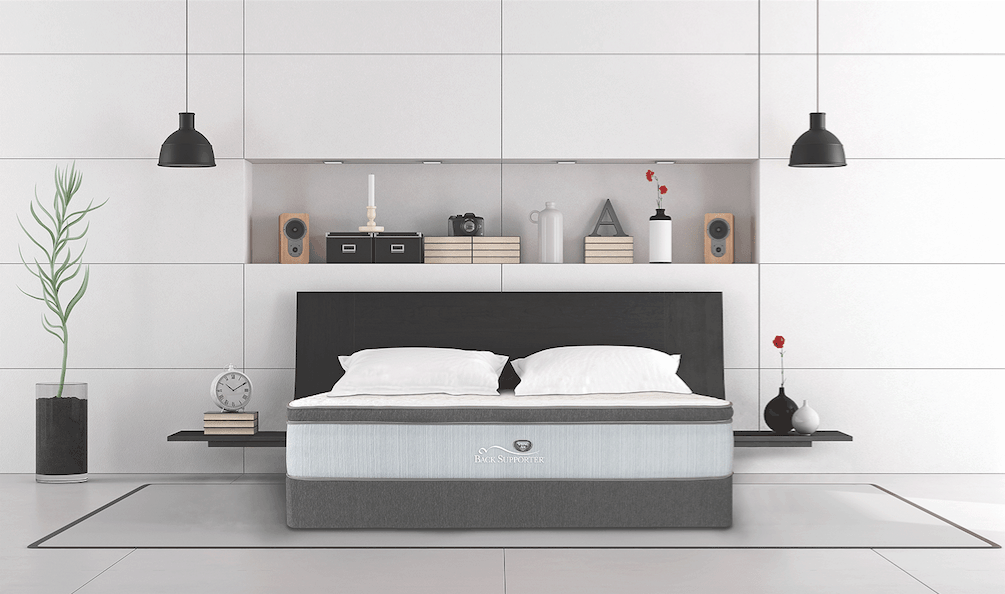
The all-new, three-model Sleep Sense Foam line, which also debuted in January 2017, features a two-sided design with latex on both surfaces. Two models incorporate a combination of latex and polyurethane foam; the premium model is all latex. Prices run from $1,499 to $3,499. The Sleep Sense line also includes a four-bed Hybrid collection priced from $1,099 to $1,499. These mattresses combine microcoils, latex, Nu-Temp cooling foam and gel foam.
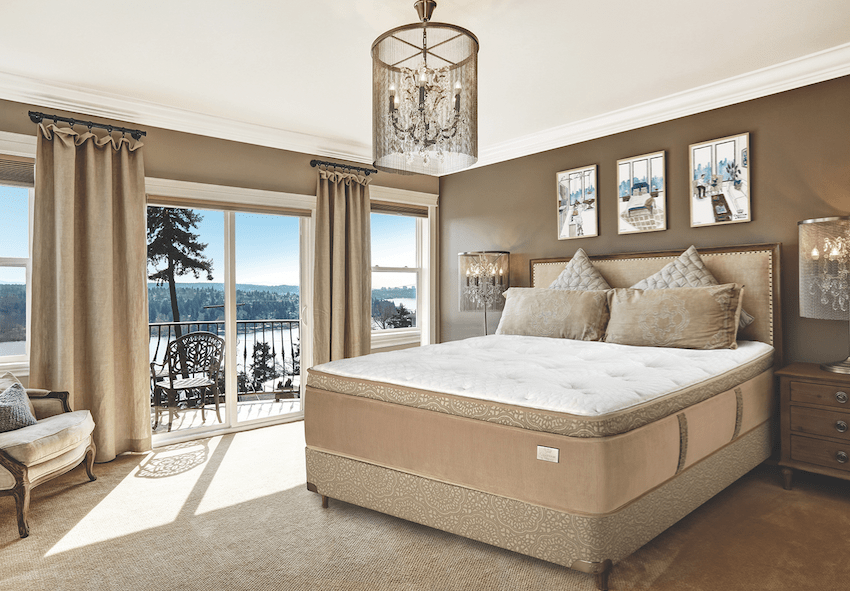
An ‘ambitious year’
During the Summer Las Vegas Market in 2017, Spring Air added three hybrid models to its Chattam & Wells collection, expanding the number of luxury, fashion-forward beds in what Bates describes as “one of our fastest-growing product segments.” The three beds retail from $1,999 to $2,899. The Chattam & Wells line, which includes a total of 10 models, tops out at $3,999.
“These new beds combine the timeless quality of the Chattam & Wells brand legacy with the latest technologies in bedding,” Bates says. “This combination gives retailers a new selling story to tell their customers, and one that’s already proven to resonate with consumers.”

Also at the Summer Las Vegas Market last year, Spring Air relaunched its Four Seasons line. The updated line features a double-sided quilt with wool fibers on one side for heat retention and phase-change technology with cooling properties on the other side. An easy-zip design makes it easy for consumers to change the sleeping surface to match the season.
“With all these relaunches and product enhancements, 2017 was a very ambitious year for us,” Bates says. “It was a busy 12 months, but we did it. A lot of the changes were a direct result of requests from licensees. And they really loved what we came up with.”
In addition to these introductions, Spring Air launched a new social benefit program last year in partnership with Love Your Melon, a U.S. apparel brand dedicated to fighting pediatric cancer. Love Your Melon donates one knit beanie to a child battling cancer for every beanie it sells. The company also donates 50% of profits from the sale of Love Your Melon products to nonprofit groups working to eradicate childhood cancer, such as the Children’s Cancer Research Fund and St. Jude Children’s Research Hospital.
As part of the initiative, Spring Air developed the Hope collection—three encased-coil memory foam beds with red knit throw pillows that incorporate the Love Your Melon logo. With every sale, a consumer receives a free Love Your Melon beanie and a portion of profits goes to support the fight against childhood cancer.
“We couldn’t be more excited about the success of this national program right out of the gate,” Bates says. “Created through our Product Development Committee, these mattresses and the story behind them will continue to grow.” He adds that the mattresses are competitively priced—from $799 to $999 in queen—and provide a “great way for retailers and consumers to support a very worthy cause.”
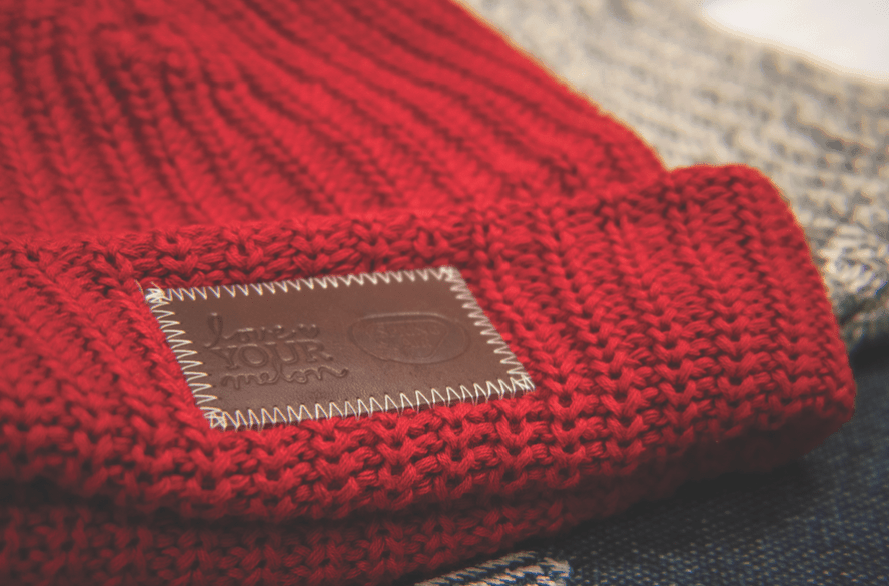
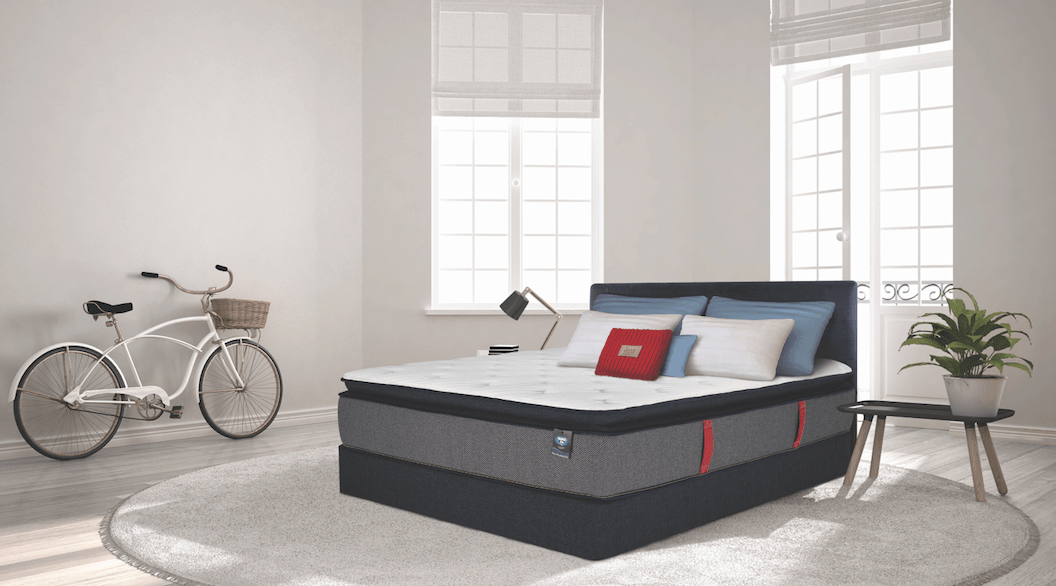
More irons in the fire
While Spring Air’s introductions at the most recent Las Vegas Market focused mostly on the rollout of a new national fabric program, the company has a major product launch planned for the summer show. The introduction will be the result of input from the new Product Development Committee.
“It’s too early to provide details,” Bates says, “but the development we have in mind will be a different product for Spring Air and for the marketplace.” He adds that he is looking forward to the launch, so that the “Product Development Committee can stand together in front of the beds they conceived and built. That will be a big moment.”
In the meantime, Bates and his team have a long list of other items they are working on. First and foremost is a brand repositioning that is scheduled to be completed in the first half of this year. To assist with the process, Spring Air retained Fire Code, a Los Angeles-based research firm, to conduct a thorough “brand DNA” study.
“Spring Air has done an amazing job throughout its history of marketing and brand building,” Bates says. “But it’s time for a refresh. In the coming months, we will be unveiling a completely new brand and tagging strategy that will position us better for the future.”
As part of the change, Spring Air unveiled a revised corporate logo on Jan. 1. The new logo is a streamlined variation of the company’s classic triangle graphic, which emphasizes “the philosophy of our Back Supporter mattress, which is balanced, in-the-middle comfort and support.”
Expanding engagement
To build awareness of its revitalized brand with retailers, Spring Air will run a series of trade ads, and to reach consumers, the company will ramp up its already active efforts on social media and on its website. Last year, Spring Air began working with Trio, a full-service marketing communications firm based in Grimes, Iowa, which is helping with the company’s digital efforts.
“We’re engaging with consumers in new, more meaningful ways,” Bates says. “Our objective is to build a base of Spring Air followers, engaging them on topics like the importance of sleep quality, the vital role a mattress plays in their lives and how our brand meets their needs.”
Working with Trio, Spring Air is developing original content for blogs and other features on its website. Trio also is posting sleep information on popular social media platforms like Twitter, Facebook and Instagram, always with a goal of steering consumers to the Spring Air website. “And if someone has an issue or a question, we’re responding to them right away,” Bates says.
Spring Air redesigned its website to make it more engaging and easier to navigate. Bates sees the site as a model for licensees’ websites, and the company is making all the content it developed for the corporate site available for licensees’ use.
“We’re reaching people—especially millennials—in the digital world where they live every day,” Bates says. In recent months, Spring Air has grown its Facebook likes from 28,000 to 50,000.
Helping to oversee social media and web activities is Michael Giurleo, who joined Spring Air as director of e-commerce in May 2017. Guirleo also is charged with “defining marketing and e-commerce goals that support Spring Air’s overall vision and branding efforts,” Bates says. As part of his mission, Guirleo is developing an online product catalog for licensees’ use that will enable consumers to have a more consistent experience, no matter where they are shopping.
Last year, Spring Air appointed Brian Lundstrom to the new position of customer experience specialist. In that role, Lundstrom is responsible for streamlining and maintaining order-entry processes and fulfillment procedures with national retailers, as well as handling customer issues and order cancellations, and working with Spring Air factories on product returns.
“We’re being much more proactive and accessible on the customer service front,” Bates says.
Quick response by Spring Air veteran breathed new life into bankrupted company
In May 2009, it looked like Spring Air’s long history as a leading bedding brand had come to an end. That month, the company that owned the Spring Air name—Consolidated Bedding of Tampa, Florida—declared bankruptcy and closed most of Spring Air’s U.S. factories, including the once-thriving Boston-area operation that Ed Bates had opened in 1972 with a borrowed $3,500.
During nearly four decades, Bates had grown his production facility into a $25-plus million company before selling it in 2007 to Consolidated Bedding. During that same year, Consolidated Bedding—at the time Spring Air’s largest licensee—acquired the Spring Air brand and rolled up eight of the nine Spring Air licensees in the United States into one organization.
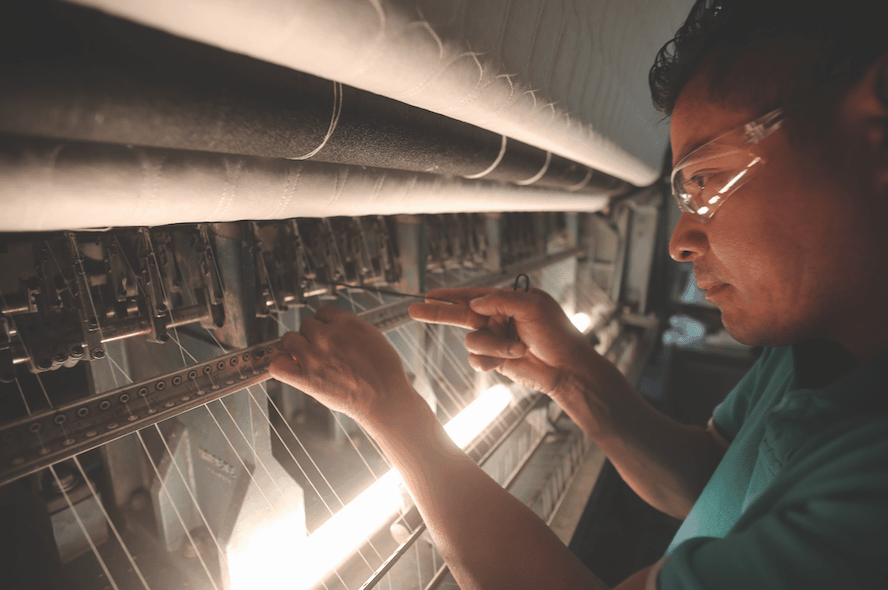
H.I.G. Capital LLC, a global private equity firm based in Miami, provided the funding for the transaction. H.I.G. Capital began a relationship with Spring Air in 2005, when it funded the merger of American Bedding Industries and Spring Air Partners, the two largest Spring Air licensees at that time.
After selling his business in 2007, Bates continued to work as a part-time consultant and then vice president and director of sales for the Northeast region for the newly unified Spring Air. In May 2009, when faced with the sight of workers locked out of his former plant due to the Consolidated bankruptcy, he bought back the facility, along with global rights to the Spring Air brand, other intellectual property and inventory. His quick action earned kudos from the local media, which hailed him as a hero for saving workers’ jobs.
“I found all the people in the street,” Bates told Boston’s WBUR-FM at the time. “They had their pink slips, ready to go. And it bothered me. When I see them there, (I thought) I’m going to buy this factory. I didn’t know what I was going to do with it. But I knew we were going to put the people back to work and we’ll figure it out later. With good people, with a plan to do whatever you choose to do, you’re going to get it done.”
That was May 4. Bates was on the phone for the next few days, and by May 8, he had bought back his factory.
A new entity called Spring Air International emerged from that deal, with new licensees signing on to produce and market the Spring Air brand from coast to coast. Bates rejoined the new company as chair and chief executive officer. Bedding veteran Rick Robinson was recruited from Australia’s A.H. Beard to serve as president.
During the next seven years, Robinson led Spring Air International as it strengthened and grew its market position. Then, on Dec. 19, 2016, Robinson died unexpectedly of natural causes. Stepping in as interim president was Nick Bates, Ed Bates’ nephew, who had joined the company nearly eight years earlier at the encouragement of Robinson.
Bates began his career with Spring Air in 2009 as a sales and marketing coordinator. In 2013, he was named director of corporate accounts, where he played an integral role in the development and growth of Spring Air’s key national accounts business. In 2016, he was named vice president of sales, with full responsibility for the company’s national accounts and major regional customers. In January 2017, at the age of 29, he was named president.
Since taking the reins at Spring Air, Bates has brought a youthful perspective to his post. Working closely with the company’s executive team (which includes his uncle, Ed, who continues to serve as chair and CEO, and Chief Operating Officer Eric Spitzer), Bates is making a concerted effort to expand the company’s reach with millennials while continuing to serve its longtime base of baby boomers and other demographic groups, as well.
“As a millennial, I have an intuitive sense for how my age group likes to shop,” Bates says. “I am exactly the type of consumer we are trying to market to and reach—a younger person who is getting married, starting a family, buying their first house or furnishing a new apartment or condo.”
At the same time, Bates is keeping a close eye on the rest of the market. “Our target is the entire market of consumers looking for quality, high-value bedding,” he says. “There are a lot of people besides millennials that are buying mattresses. With the help of Ed and Eric, who have been in this industry for many decades, we have a wealth of experience and knowledge to draw on as we move our company forward.”





